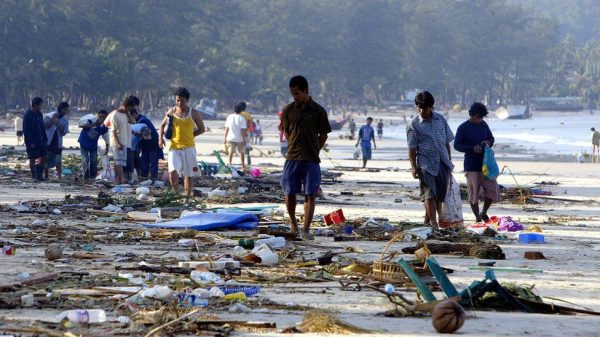Millions of Vietnamese workers, including drivers, street vendors, cleaners, builders, and farmers, who form the backbone of society, have been disproportionately impacted by the recent extreme heat wave in Southeast Asia. This region experienced its most severe heat wave on record, causing detrimental effects on the health and livelihoods of these individuals.
Typically, April and May are known as the hottest months in Southeast Asia, with temperatures rising before the monsoon rains provide some relief. However, this year witnessed unprecedented heat levels across the region, even in popular tourist destinations such as Thailand and Vietnam.
Songkran, the Thai New Year, on April 13, is the annual bridge between the ‘hot season’ and the start of the country’s wet season.
On April 15, Thailand recorded its highest temperature ever at 45.4 degrees Celsius, while neighboring Laos experienced consecutive days of scorching heat reaching 43.5 degrees Celsius in May. Early May marked a new all-time temperature record in Vietnam, soaring to 44.2 degrees Celsius. Surpassing previous records, Vietnam also broke its hottest June day record on June 1 with a scorching 43.8 degrees Celsius, leaving 29 days in the month yet to come.
The World Weather Attribution, an international coalition of scientists, published a recent report stating that the April heat wave in Southeast Asia was a once-in-200-years event and would have been nearly impossible without human-caused climate change.
The combination of extreme temperatures and high humidity in Southeast Asia made the heat wave even more unbearable and dangerous. Humid heat makes it exceedingly difficult for the body to cool down effectively.
Here are some tips to cope with high humidity…
Heat-related illnesses, including heat stroke and heat exhaustion, can have severe symptoms and pose life-threatening risks, particularly for individuals with pre-existing conditions such as heart disease, kidney problems, diabetes, and pregnant individuals.
Mariam Zachariah, a research associate at the World Weather Attribution initiative at Imperial College London, explained that when humidity is high, the body continues to sweat in an attempt to cool down. However, because the sweat does not evaporate effectively, it can lead to severe dehydration and, in acute cases, heat strokes and even death.
She says this highlights why a humid heat wave is more perilous than a dry one.
To gauge the health risks of humid heat, scientists often calculate the “feels-like” temperature, which accounts for both air temperature and humidity, alongside other factors like wind chill. The perceived heat is typically several degrees higher than the observed temperature and provides a more accurate measure of how heat affects people.
Between early April and late May, all six countries in continental Southeast Asia experienced perceived temperatures close to or above 40 degrees Celsius (104 degrees Fahrenheit) every day. These temperatures surpass the threshold considered dangerous, particularly for individuals with health issues or those unaccustomed to extreme heat.
Thailand, for instance, had 20 days in April and at least 10 days in May with feels-like temperatures exceeding 46 degrees Celsius (115 degrees Fahrenheit). At this level, thermal heat stress reaches an “extreme” level and is considered life-threatening, even for healthy individuals accustomed to high levels of humid heat.
Throughout April and May, Vietnam, Cambodia, Laos, and Malaysia encountered several days with the potential to cause extreme heat stress. Myanmar experienced 12 such days until Cyclone Mocha brought some relief, albeit with severe devastation, when it made landfall on May 14.
The April-May heat wave in Southeast Asia resulted in numerous hospitalizations, road damage, wildfires, and school closures. However, the exact number of deaths caused by the heat wave remains unknown, as reported by the World Weather Attribution.
The study found that, due to climate change, the perceived temperature during the heat wave was more than two degrees higher than it would have been without the global warming caused by pollution.
If global warming continues to rise by 2 degrees Celsius (3.6 degrees Fahrenheit), these types of humid heat waves are set to continue providing an existential problem for millions of people in SE Asia who will be forced to seek ‘cooler’ solutions for their livelihoods.









